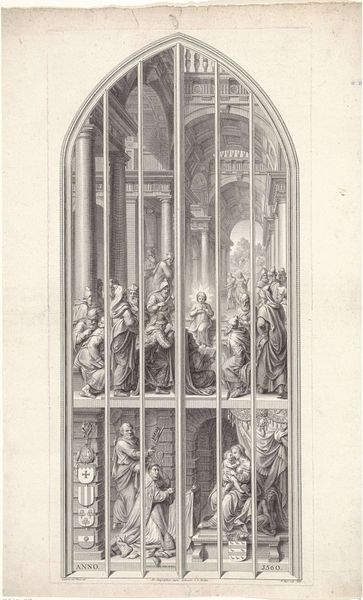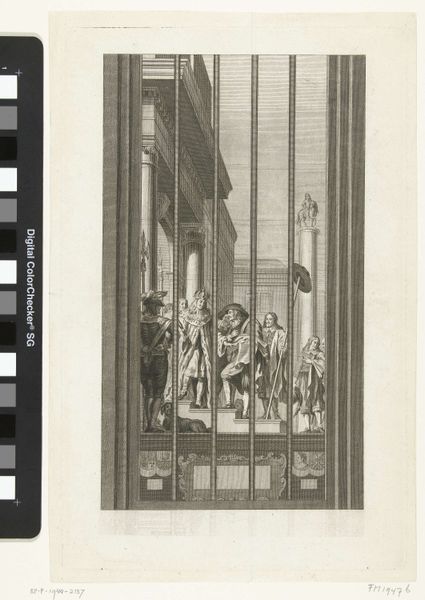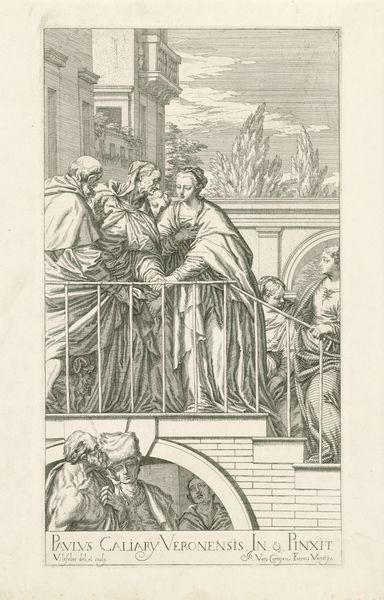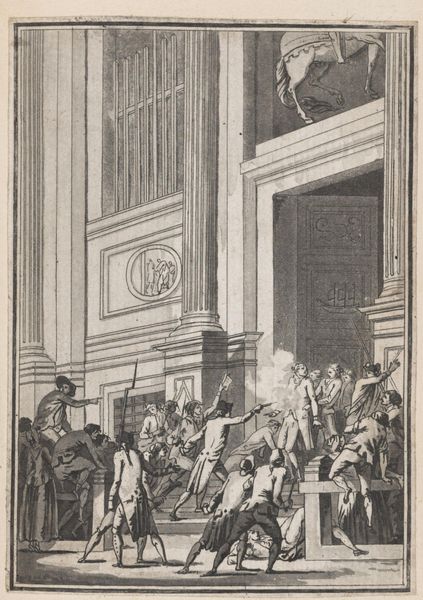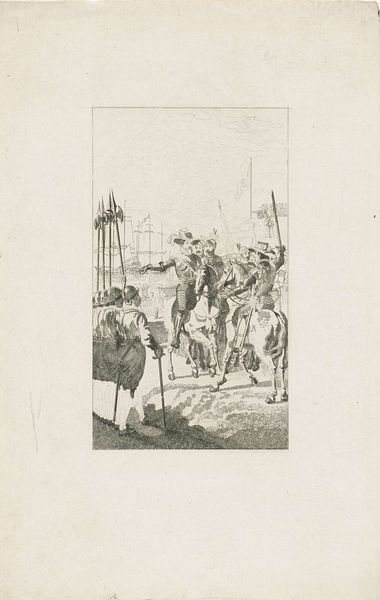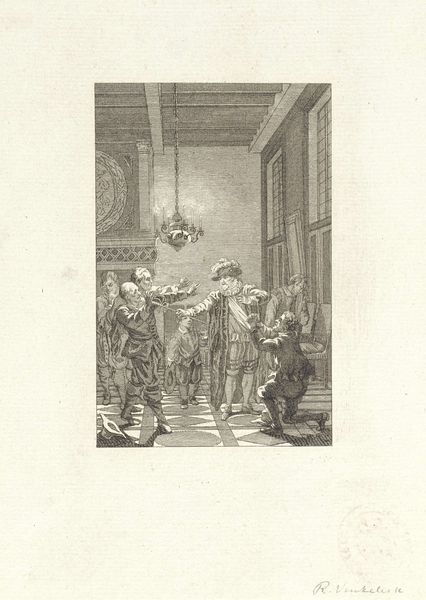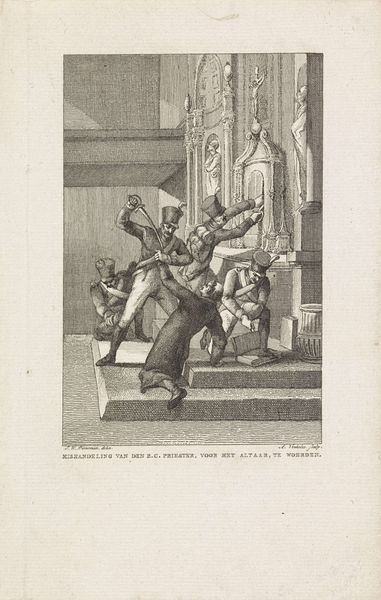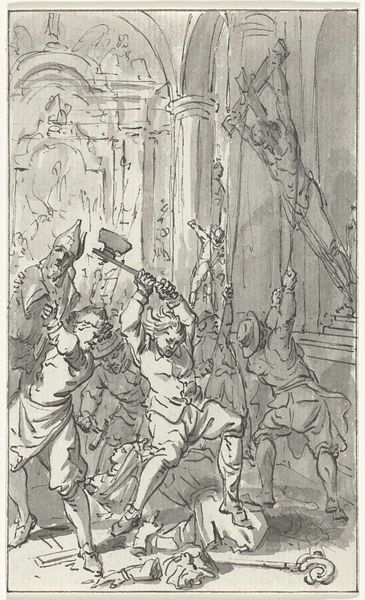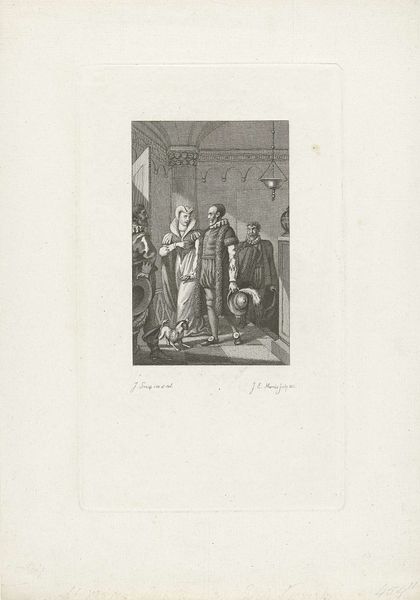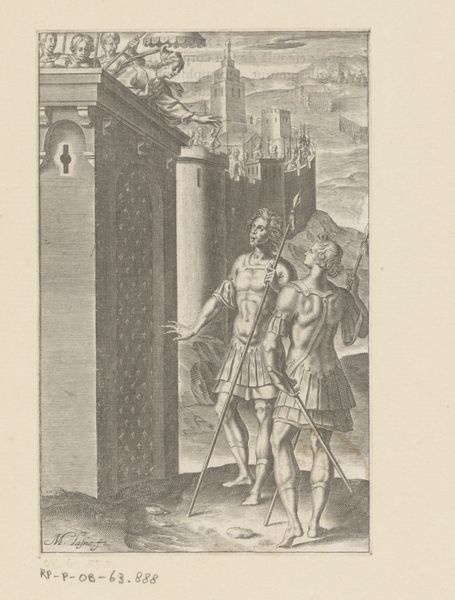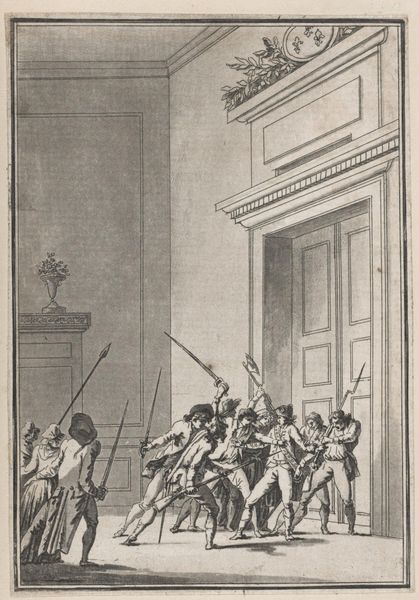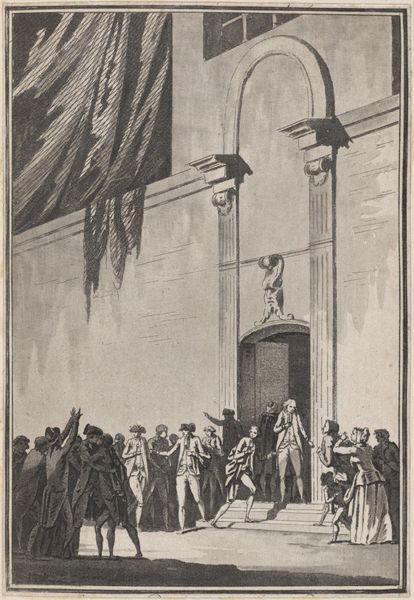
Glas-in-loodraam met koning Filips IV die afstand doet van de Nederlanden, 1648 1779
0:00
0:00
Dimensions: height 312 mm, width 197 mm
Copyright: Rijks Museum: Open Domain
Editor: Here we have Jan Punt’s engraving from 1779, titled “Glas-in-loodraam met koning Filips IV die afstand doet van de Nederlanden, 1648”, or “Stained glass window with King Philip IV renouncing the Netherlands, 1648." It recreates a historical stained-glass window in print. It's striking how the bars in the print give the impression of confinement and a constructed view. What stands out to you? Curator: For me, this engraving offers a commentary on the industrial process of reproducing images, a mediation of historical power through accessible means. Notice the intricate detail achieved through etching and engraving, processes requiring specific skills and labor. This readily-distributed print of a stained glass, initially available to but a select few, makes a specific image democratically accessible in a way a singular piece like a stained glass window never could. The means of production really transform our perception of this event and of access. Editor: That’s an interesting point about democratization through printmaking. But isn't the subject – King Philip IV giving up the Netherlands – still tied to systems of power and control? Curator: Absolutely. The image itself perpetuates a certain narrative. However, consider the context: the engraving was made in 1779, decades after the actual event. It's less about the event itself, and more about *how* that event is being framed, consumed, and circulated at this later point through printmaking. The work also shifts attention to the labor involved in image making, both for the original stained glass and then again for the print itself. Think about the conditions in which these craftspeople were working. Does considering the labor involved impact how you view the subject matter? Editor: It does. By thinking about the materials and production process, the image opens up questions about not just who is depicted but also who *made* the depiction, and for whom. I had not previously thought of how labor becomes refigured when art crosses mediums. Curator: Precisely. The layers of production are key. Examining those reveals so much more than simply the scene depicted.
Comments
No comments
Be the first to comment and join the conversation on the ultimate creative platform.
